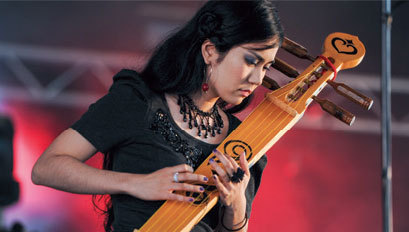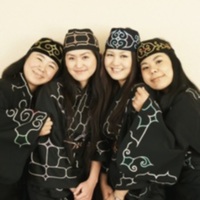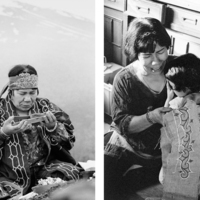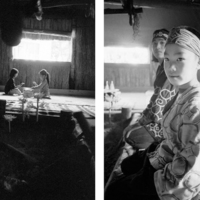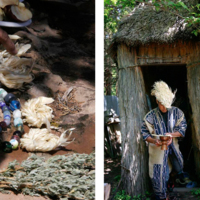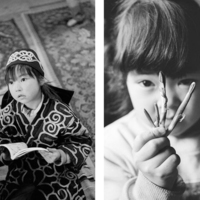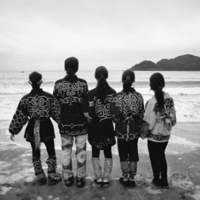Japanese Modernism Across Media
Epilogue: Ainu and their Future
Both the young and elderly generations, and Ainu and Japanese people in the present day are working to continue engaging in the traditional Ainu culture and spreading awareness to the people around them. Keeping a culture and language alive is not an easy task, however, with the abolishment of the Hokkaido Former Aborigenes Act from 1899 allowing the Ainu to once again take part in their traditions, hope has not been lost for the future generation of Ainu as well as the Japanese. Photographers have created exhibits portraying lives of modern day Ainu people. Musicians have mixed traditional instruments and contemporary music to provoke interest in the younger generations. Documentary films have been made to describe the activist aspect as well as the everyday lives of the elderly generation living in Tokyo. As it has become inevitable for the Ainu to live in the Japanese society, their way of expressing their identity is becoming the question of how to co-exist with both the Ainu and the Japanese identity. These efforts are being made to raise awareness to the younger generation as well as the Japanese society about the importance of living in a multicultural environment and to be proud of your identity.
Music
Musicians and musical groups, such as Mina Sakai (pictured above) and Marewrew mix up traditional instruments and singing with contemporary music to raise interest in the younger generations.
Mina Sakai was born between an Ainu father and a Japaneese mother in 1983 in Obihiro, Hokkaido. Because her father passed away when she was young, Sakai did not get proper education of the Ainu language and culture, but as she grew older, she realized the importance of communicating about her culture to other people. Sakai has been involved in numerous conferences promoting positive messages about being Ainu. Although they disbanded in 2010, Sakai was a leader of Ainu Rebels, a band that started out with a project. The music they produced combined traditonal Ainu music with hip-hop and rap. Sakai was aware that a band was not the most orthodox way to promote Ainu culture, however, she believed in the potential of presenting her culture in a different way, combining Ainu and Japanese origins, as present day Ainu know it is inevitable to take out Japanese aspects from their identity.
Marewrew (meaning "butterfly" in Ainu) is a singing group composed of four female Ainu singers dedicated to reviving Ainu music. Their style is similar to a Western canon, where various rhythms are repeatedly sung at different timings. They have toured all through Japan as well as internationally, in Taiwan, Australia, Germany, and the U.S.
Photography
There are some modern day photographers that devote themselves to making a photographic collection of the way modern Ainu are living. Makiko Ui is a great example of one. Although she is fully Japanese and was born in Chiba, she started working as a freelance camera man after getting a degree from Musashino Art University and in 1992, she began her focus on the Ainu. She had been accepted into the Ainu community ever since, and her collection of photos, Ainu, Portrait of the Wind, gives a glimpse of the peaceful lifestyles of modern day Ainu people. Ui's collection includes photos from everyday life to traditional ceremonies, and from babies to adults.
Documentary
Several documentary films on present day Ainu people have been made both internationally and in Japan. An example of one made in Japan is called TOKYO Ainu, directed by former TBS (Tokyo Broadcasting System) director, Hiroshi Moriya. Moriya wanted to capture the images of the Ainu for future generations. The film depicts mostly the elderly generation of Ainu who fled Hokkaido and settled in Tokyo to escape racism and discrimination. However, they had difficulties fitting into the urban Japanese society and finding work, while holding onto their identity. The documentary is described to be a tapestry of many personal stories woven together- stories of exploring a new identity, searching for an identity, and having to lock their identities inside their hearts.
